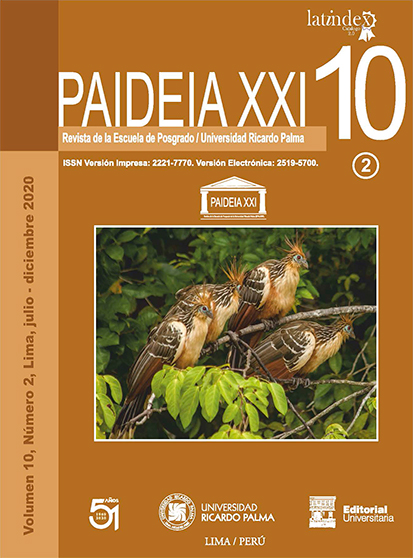EVALUATION OF AN EXPERIMENTAL SYSTEM TO DETERMINE THE EFFECTIVENESS OF LARVICIDAL ACTIVE PRINCIPLES ON IMMATURE STAGES OF LUZTOMYIA LONGIPALPIS (LUTZ & NEIVA, 1912) (DIPTERA: PSYCHODIDAE)
DOI:
https://doi.org/10.31381/paideia.v10i2.3447Abstract
Leishmaniosis is a disease caused by a protozoon of the Leishmania genus, transmitted by Phlebotominae insects' bite. Leishmania infantum Nicolle, 1908 (syn. L. chagasi) is the etiologic agent of visceral leishmaniasis in Argentina, and the phlebotomine Lutzomyia longipalpis (Lutz & Neiva, 1912) is the main vector. The objective of this work was to evaluate an experimental laboratory designed to determine the effectiveness of active principles in juvenile stages of Lu. longipalpis -used in this case- is an insect growth regulator as the active principle, the pyriproxyfen. The work was carried out at the Municipal Institute of Vector Surveillance and Control of Posadas, province of Misiones, Argentina. For this work, we impregnated paper filter with acteona: silicone solution (1:1) just for the control group, and the treated groups were impregnated with acetone: silicone solution (1:1) and pyriproxyfen in 5 mg·m2 concentration (Treated Group A) and 50 mg·m2 (Treated Group B). We placed the filter paper (control or treated) 10 second instar larvae of Lu. longipalpis, which were fed by breeding food. All the pots got to an advanced stage of larva III, especially the control pots, while for the treated pots getting to the same state took longer. It was observed that the design requires modifications, since the larvae were placed under the filter papers without being able to reach the top again; hence they were attacked by fungi.
Key words: Leishmaniosis – Lutzomyia longipalpis – Pyriproxyfen – Vector












